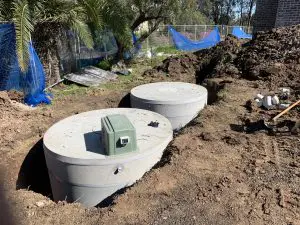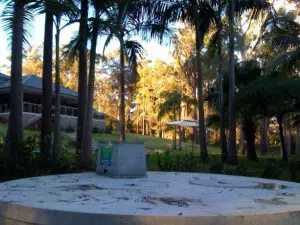Septic Tank Maintenance 101: A Comprehensive Guide for Sydney Homeowners
As a responsible homeowner in Sydney, NSW, proper septic tank maintenance is essential for ensuring the longevity and efficient functioning of your wastewater management system. Septic tanks play a crucial role in handling domestic wastewater, especially in areas without access to centralized sewer systems. This comprehensive guide will equip you with essential tips and information to take care of your septic tank, ensuring it remains in optimal condition and protects both your property and the environment.
Understanding Your Septic System
Before delving into maintenance practices, it’s essential to understand how your septic tank system works. The system consists of three main components:
Septic Tank: This underground container collects and treats wastewater from your home. It separates solid waste (sludge) from liquid waste (effluent) using a natural anaerobic process.
Drain Field: Also known as the leach field, this area disperses the treated effluent into the soil, allowing further purification through natural filtration.
Soil: The surrounding soil acts as a final treatment stage, removing any remaining contaminants from the effluent before it reaches groundwater.
Septic Tank Maintenance Basics
Knowing Your System
Familiarize yourself with the location of your septic tank and drain field on your property. Having this knowledge allows you to avoid building structures or planting trees too close, which could interfere with the system’s functionality. Keep a record of its installation date, last pumping, and any maintenance or repairs done. This comprehensive history will help you track your system’s performance over time and anticipate any maintenance needs. Consider creating a simple sketch or map of your property to mark the location of the septic tank, drain field, and other critical components.
Regular Inspections
Scheduling annual septic tank inspections by a licensed professional is vital for early detection of potential issues. During inspections, the expert will check for leaks, signs of damage, and the sludge level in the tank. By identifying problems in their early stages, you can prevent major malfunctions and costly repairs. A well-maintained septic system is more likely to have a longer lifespan and operate efficiently, giving you peace of mind knowing that your wastewater management is functioning optimally.
Pumping
Pumping is a critical aspect of septic tank maintenance that involves removing accumulated solid waste (sludge) from the tank. On average, tanks should be pumped every three to five years, depending on household size and water usage. Regular pumping ensures that the tank maintains its capacity to hold and treat wastewater effectively. Neglecting this aspect can lead to an overflow of solids into the drain field, causing clogs and potential system failure. Keep a record of your pumping schedule to stay on top of this essential maintenance task.
Water Conservation
Water conservation practices are not only beneficial for the environment but also for the health of your septic system. Conserving water reduces the volume of wastewater flowing into the tank, preventing overloading and prolonging its life. Fix leaks promptly to avoid unnecessary water waste. Installing water-efficient fixtures, such as low-flow toilets and aerated faucets, helps regulate water usage while still providing effective functionality. Spreading out laundry and dishwashing loads throughout the week also helps prevent excessive water flow into the septic tank, maintaining its balance and efficiency.
Avoid Harmful Substances
To maintain a healthy septic system, avoid disposing of non-biodegradable items, chemicals, grease, or medications down the drains or toilets. Non-biodegradable substances can disrupt the natural breakdown process inside the tank, leading to excessive sludge buildup. Grease can solidify and clog pipes, while chemicals and medications can harm the bacteria responsible for breaking down waste. Opt for septic-safe cleaning and personal care products labeled as biodegradable, ensuring they do not interfere with the bacterial balance in the system.
Be Mindful of Landscaping
Landscaping around the septic tank and drain field requires careful consideration. Avoid planting trees or shrubs with extensive root systems near these areas. Tree roots can infiltrate and damage the system, leading to costly repairs and compromising its effectiveness. Opt for plants with shallow root systems or those that do not spread aggressively, allowing your septic system to operate without interference. When designing your landscape, create a buffer zone around the septic components to ensure the system’s integrity and prevent root intrusion.
Septic Safe Products
Using septic-safe products in your household is an eco-friendly choice that contributes to the well-being of your septic system. These products are specially formulated not to disrupt the bacterial balance within the tank. Biodegradable cleaning agents and personal care products minimize the impact on the system and maintain its efficiency. By opting for septic-safe products, you actively participate in responsible wastewater management, ensuring the longevity of your septic tank and protecting the environment.
Avoid Heavy Machinery
It is crucial to keep heavy machinery and vehicles off the septic tank and drain field area. The weight of these vehicles can compress the soil and damage the pipes, disrupting the natural flow of wastewater and compromising the system’s efficiency. Avoid parking cars, trucks, or heavy equipment on or near the drain field to prevent any adverse effects on the septic system’s function. By being mindful of your property’s usage, you can ensure that your septic tank remains in excellent condition for years to come.
Educate Family Members
Education plays a vital role in maintaining a well-functioning septic system. Educate all household members about the proper use and care of the septic system. Everyone in the household should understand what can and cannot be flushed or drained into the system. Encourage responsible practices, such as using septic-safe products, and provide clear guidelines for water usage to avoid overburdening the system. By involving everyone in the household, you create a shared responsibility for the health and proper maintenance of your septic tank.
Follow Local Regulations
Familiarize yourself with local regulations and requirements for septic systems in Sydney, NSW. Regulations may vary depending on the region and property type. Compliance with these rules ensures that your septic system meets safety and environmental standards. Adhering to local guidelines protects your property and surrounding areas from potential contamination and contributes to a healthier environment. If you are unsure about any aspect of your septic system, consult a licensed professional who is well-versed in local regulations and can provide expert advice tailored to your specific needs.
Signs of Potential Issues
Being vigilant about recognizing signs of potential septic tank problems is crucial for prompt action. Ignoring warning signs can lead to more significant issues and costly repairs. Keep an eye out for these indicators:
Slow-draining sinks and toilets: If your sinks or toilets are slow to drain, it could indicate a blockage in the plumbing or the septic system itself.
Foul odors around the septic tank area: A strong sewage smell around the tank or drain field area suggests a potential problem that needs immediate attention.
Puddles or wet areas in the drain field: Standing water or damp patches above the drain field can indicate that the system is not effectively treating and dispersing effluent.
Gurgling noises in the plumbing: Unusual gurgling or bubbling sounds in your plumbing may indicate a blockage or backflow issue in the septic system.
Sewage backups in the house: If sewage starts backing up into your home, it’s a clear sign of a severe septic system problem that requires immediate professional assistance.
If you notice any of these signs, contact a licensed septic tank professional promptly for an inspection and necessary repairs. Addressing issues early can save you from more extensive and costly repairs down the line.
For a Free Quote and Sizing on all Septic Tanks Made in Australia call the team at Eco-Septic on 1800 808 135
Related Posts
- New Year, New Pump: Upgrading Your Septic System in 2024
- Why every home in Australia needs a rainwater tank
- What is a residential greywater system?
- Tank vs. Sewer System: Which Is Better for Sydney Homes?
- Home Sewage Treatment Plants: What They Are And How Do They Work?
- What are the different type of commercial wastewater treatment systems
- Where Are Septic Tanks Used
- Revolutionizing Waste: AWTS Systems Pave the Way for Sustainable Living in Australian Homes




